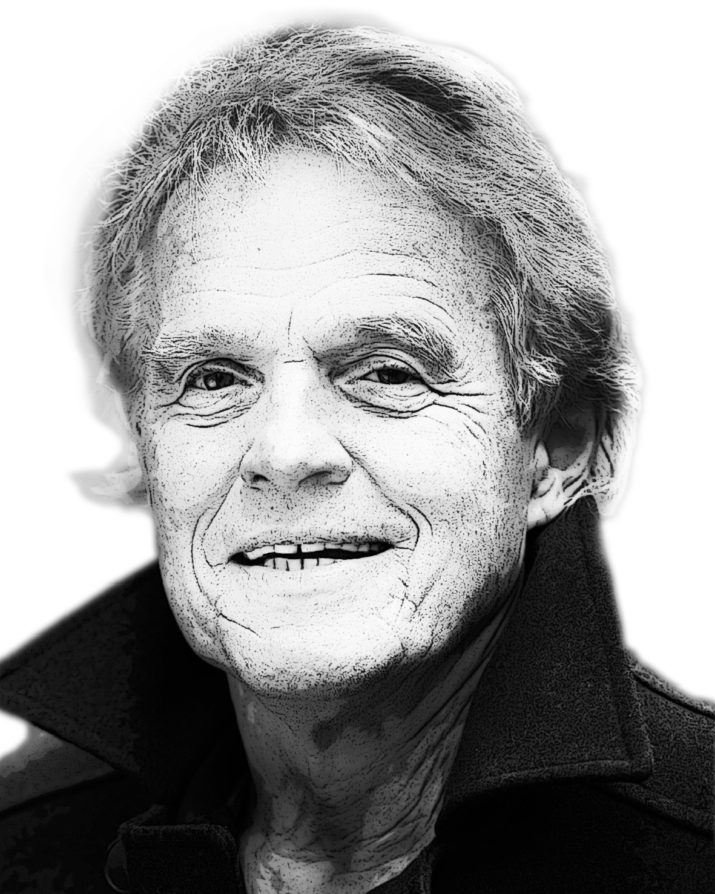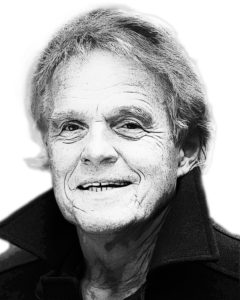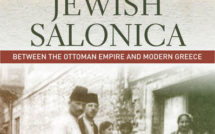
Migration, Integration, and Heritage in the “European City:” An Interview with Wolfgang Kaschuba

This is part of our special feature, Contemporary Urban Research in the European City.
Translated from the German by Nicole Shea.
The Berlin Institute for Integration and Migration Research (BIM) is a transdisciplinary research institute at the Humboldt-Universität zu Berlin. The institute’s aim is to research the dynamics of migration, integration, in- and exclusion processes within “postmigrant societies,” whereby the analytical perspective goes beyond the “migrant” perspective and encompasses the whole society. The linking empirical research with theories of migration and integration enables a critical reflection of already established discourses on the themes of immigration, belonging, discrimination and racism. The scope of the subject area of integration and migration is reflected by the six departments from various Berlin institutes that contribute their research knowledge to the BIM. These scientific disciplines range from social, cultural, and educational sciences to sports sciences, psychology, and medicine. The BIM thus unites and links widely differing scientific perspectives and methods. The founder and initiator of the BIM is the ethnologist Wolfgang Kaschuba, whose work has been addressing the key issues of post-modern urban European life for decades. As the director of BIM, he is dealing with current social debates on migration and integration, but on national identity and heritage as well.
—Eszter Gantner for EuropeNow
EuropeNow The BIM has been recently founded. What is the focus of the Institute and which topics are addressed? Also, is it significant that the Institute was founded in Berlin and not in Hamburg or Munich?
Wolfgang Kaschuba Founded in 2013, the BIM is a comparatively young institute. As such, it has had to literally “set itself up” both in terms of content and concept in the fields of research into flight, migration, and integration. This is a big challenge, as we still have to work out perspectives and guidelines. At the same time, it is a tremendous opportunity for us specifically, but also for the research landscape in general, because we are able to develop new perspectives and new methodological concepts without the usual baggage and without being hindered by routines or traditions that may cause theoretical “blind spots.” This situation and the position of a new beginning is, therefore, of great importance. Furthermore, it allows for an overall critical perspective regarding the fields of social and cultural studies in Germany, raising question as to whether extant theoretical concepts and methodological approaches meet the challenges of both the changing realities of an immigration society in Germany and the globalization of economic, social and cultural living conditions. New and self-critical reflection is necessary.
The need for new perspectives in this field of research prompted the Hertie Foundation, the German Soccer Association, and the Federal Labor Institute to request that this new Institute be established at the Humboldt University and in Berlin. With its unique urban history and culture, Berlin embodies the central “laboratory” of the immigration society in Germany since the most diverse forms of mobility intersect with other new phenomena of social change and the metamorphosis of the urban cultural landscape. To me, Berlin appears wider in its expanse and more deeply in touch in its substance than, for instance, Hamburg or Munich, particularly if I think of the dramatic speed of local immigration and emigration; or about the specific developments of urban labor, as well as housing markets, or, above all, of the dynamics of a cultural urban atmosphere. How precarious exclusivity, speculation and creativity, and mainstream and minority cultures are often colliding in an unchecked fashion; indeed, Berlin has many experimental features.
From the earliest point on, it was important that the BIM not narrowly define the key concepts of “migration” and “integration,” as they were only conceived with an eye on special groups of newcomers. Instead, we tried to develop these concepts in a more encompassing fashion for the whole of society as a way to fundamentally inquire about the motives and dynamics of social mobility and movement, cultural inclusion and exclusion processes, as well as ethnic and religious formations. When we speak of an “immigration society,” we speak about majorities within society by now, which, in Germany, are affected by the most diverse forms of mobility and change, signifying diverse ways of life and cultural values. These latter are consistently redefined in “identitarian” ways via the younger generations. In this gradually alienated society, increasingly defining itself by means of individualized lifestyles and life designs, relevant research must abandon a classical focus on social or ethnic minorities and instead contemplate society as a whole. Only in that way can we adequately observe and analyze the myriad current tendencies concerning the social and cultural rifts in the social landscape in Germany. Hence, the BIM has made it its main task to accompany this diverse social search for orientation via its research.
EuropeNow Before you took on your current role at the Institute, you had been the Chair of the Department for European Ethnology at the Humboldt University of Berlin since 1992. What did the concept of the discipline of “European Ethnology” mean back then? What did “European” mean back then and what does it mean today?
Wolfgang Kaschuba First, the new concept of an “European Ethnology” developed in quite a number of European locations as a form of expression for a specific political and scientific transitional period. Since the 1980s at the latest, it became clearer—both prior and after the fall of the Iron Curtain—that the thinking in terms of politics as well as in research had reached its limits within the old national categories. Even back then, many of these processes became apparent which we today subsume under the term “globalization.” History and culture, economy and society could no longer be sufficiently observed and explained via national navigation maps. In particular, old concepts of national folkloric studies and colonial ethnologies had to be literally deconstructed, as they were hopelessly outdated and had clearly emerged from imperialist perspectives. They had to be dismantled and replaced by a completely different cultural knowledge perspective.
First, the idea of “European Ethnology” turned against this national and colonial programming and its classical differentiation between “own” and “foreign.” Second, the term also indicated the end of the European “post-war period,” bursting political and cultural barriers open, particularly after 1989 and, in many cases, disintegrated into actual “European” dimensions of political and social movements of migration and mobility, of historical and identity debates. And third was the attempt to identify “folklore studies” and “ethnology” as colonial European inventions and as tools of a cultural “charting of the world” to develop strategies of self-reflective historical analysis.
The “European” was supposed to be explored as a phenomenon as well as a perspective and, as such, made visible as a historical and cultural construction. What was meant here was a discursive frame rather than the geographic space: “Europe.” At the same time, dramatic changes and distortions in the social European landscapes were also examined as part of these new and critical perspectives which occurred after 1989 permanently changing the inner European perceptions of self as much as its outer horizons. “European Ethnology” offered itself as a pragmatic bridge, enabling new research cooperation between Eastern and Western Europe as well as between the north and south. This term is, however, certainly not carved in stone, and the next name debate will certainly arrive at some point.
EuropeNow Europe is also an urban continent. Is there such a thing as the “European city”? We know of the respective concept by Walter Siebel; yet what does empirical urban research have to contribute? How would you understand the European of the city?
Wolfgang Kaschuba When we generalize, we, of course, coarsen and de-differentiate. And the same holds true with the concept of the European city. However, with regards to history, we can name a number of conditions for framing and developing that have shaped the emergence and growth of cities in Europe. Hence, city spaces and city walls are pre-modern, arising via the immigration of new people, ideas and goods. Thus they are expressions of the interaction of migration and markets, of power and architecture, of social rank and Christian religion, but also of civil knowledge and legal statutes. And these factors determine the urban topography too, which, on the one hand, prescribes a firm inner and spatial order, plays a central role with centrality and representation, both with the order of the urban landscape around the market place as well as with regards to urban housing and social milieus. On the other hand, an outer order is fixed in the sense of a historically grown city-outskirts relation that determines a clear division of labor and different legal forms.
In that way, “bourgeois” self-images and living environments arise in a systematic way. And this bourgeoisie, as both privileged legal status and social formation, becomes the central group of actors on the path to urban modernity. With the growing size and diversity of urban societies in the nineteenth and twentieth centuries, such an urban culture crystallizes, characterizing our metropolis and large cities even today: the growing plurality and internationality in public life and open space; the increasing attractiveness of inner cities as living environments; the great free movements of our leisure time cultures and lifestyles, from fashion to culinary cultures; and the architectural structure of the urban landscape, consisting of both old and new representational buildings, cultural institutions or museum quarters.
The type of “European city” insists on traditions that have much to do with urban history and urban knowledge that orient themselves to city maps and central locations that wish to see the urban space designed as experiential and always as “accessible on foot.” Upon this is built the great identification of citizens with their cities. This tradition of bourgeois knowledge and acting is currently transformed into new forms of civil society activity and initiatives that are now dealing increasingly with urban and traffic planning, with educational institutions and public spaces, with neighborhoods and urban green spaces. These specific forms of urban identity and praxis appear to move increasingly into the foreground as civil society engagement, from London to Saint Petersburg and from Oslo to Palermo, embodying perhaps the best traditions and continuities of a “European city,” which, in numerous urban narratives, speak of its flair and culture: in the stories, pictures and myths of “life in the big city.”
EuropeNow What, in your opinion, are the big current topics in European urban research?
Wolfgang Kaschuba Currently, and above all, research inquires how urban society and urban culture can be planned in a more forward-looking fashion and be developed more sustainably. Given the rapid growth of cities, not only but above all in Europe, questions concerning both the economic and social, the ecological and spatial borders must be newly formulated and answered. A central research approach concerns itself with the questions of how cities should deal with their energy and ecological resources and should try to develop socio-ecological and technical concepts of a “smart” urban infrastructure. Other projects concentrate on the problem of how successful social mixture and cultural diversity can be preserved in metropolitan city centers which, otherwise, are threatened by social upheaval via speculation and tourism. A third research strategy searches for new ways and forms of cooperation between urban politics/ administration and community and civil society initiatives. Here, new concepts of local knowledge and civic science play a major role, including new conceptions of urban competence and expertise. And a fourth research field attempts to open up new perspectives regarding small-space experiments as part of neighborhood as well as civil society initiatives that wish to administer and shape specific spaces. In this context, supportive local programs, from residential management to event management, play a crucial role.
EuropeNow Which developments signify the biggest challenges for European cities?
Wolfgang Kaschuba Cities still embody the big social “integration flood gates” since their spaces and milieus constantly open wider and rearrange themselves both spatially and socially. This permanent urban process of change results from social diversity and creates a systematically cultural hybridity in cities. These processes of hospitality and mixture make the big city receptive and accessible for new people and ideas. Not just for migrants and refugees but also for actively mobile and creative people in search of new work and lifestyles. This inner as much as outer attraction is being depicted in Europe today more than ever.
However, this development did not take place in such a linear and natural fashion as it might appear to us today. It was preceded both by the dramatic destruction through National Socialism and World War II, as well as by the concepts of “concrete modernity” and the “car-friendly city” in the post-war period, which were hardly any less destructive. Alexander Mitscherlich in the 1960s spoke of a bleak “inhospitality” of cities since city centers increasingly functioned as mere work and traffic centers, public spaces were characterized by neglect and criminality and houses and apartments only served as objects of speculation or as islands of family privacy. Retreat into the sofa corner instead of a night- and public life: this was still the motto in the 1970s.
It was communal cultural politics that saved cities from this crisis. Through “culturalization from above,” city culture in the 1970s experienced a “festivalization” of urban culture in form of music, theatre and literature festivals. In the 1980s, this culture became “institutionalized” via thousands of new museums and cultural institutions. Thereafter, in the 1990s, city culture became an “eventization” as exhibitions, concerts and festivals caused international furor. From the 2000s on, our inner cities experience a “Mediterranization,” its systematic “beach-cation” and “palm-tree-mation.”
Parallel to this “culturalization from above,” corresponding movements also developed from below, adapting to these manifestations. Via social movements and cultural initiatives, of ecological and political concepts, of social and artistic interventions, dramatic paradigm changes took place: away from the “Fordistic” to the “post-Fordistic” city, away from the “city as the world of work” to the “city as the world of life,” away from the passive urban “population” to its active “bourgeoisie.”
Only the cooperation of these two initiatives can create the public urban spaces and cultures which can grant us social diversity, neighborly liveliness, and cultural creativity. A sheer urban cultural revolution has taken place in the last 40 years, providing us with new needs and lifestyles and turning us, in some way, into global urban citizens.
Today, this social mixture and cultural diversity are in danger of being destroyed once again by new threats. For this reason, urban research and urban politics have to carefully observe how living conditions are developing in big cities under global conditions of flight and immigration, housing shortage and speculation, pollution and traffic gridlock, mass tourism and mass culture. Only social mixture and cultural diversity can guarantee the liveliness of inner cities as well as conurbations. In many ways, this requires new thoughts with regards to traffic and space planning, concepts of energy and ecology, the politics of public information as well as social participation. A new urban “ethos” must result which ensures that both inhabitants and visitors of European cities deal with urban spaces and cultures by keeping the overall wellbeing of the community in mind. Urban space must function almost like a “nature reserve,” which, in this case, is a “culture reserve” that everyone is committed to.
EuropeNow How do these challenges and developments manifest themselves in Berlin? The city experiences a “boom,” is always in demand and consciously plays with this image as part of its marketing strategy. Where is Berlin now?
Wolfgang Kaschuba At the moment, Berlin is in a decisive phase of development. On the one hand, the city seems more united in this one generation after its unification. It also has developed new economic, social, and cultural potentials, finding itself more at ease with its new role as global metropolis, as national seat of government and as a regular federal state. On the other hand, this progress also makes visible great infrastructural weaknesses and conceptual deficits—both in its economic and social-urban development and in its political and planning administration.
Berlin’s jump onto the world stage has just begun. And it needs careful maneuvering to use this historic momentum decisively for the future. It is precisely urban society itself that makes up its largest and most important resource for the successful handling of this challenge. By now, urban society has shaped itself in such great width, diversity and seriousness that Berlin has become a national as well as international “laboratory” of urban development. At the same time, it has also become a proper field of experimentation of new civic and bourgeois forms of discussion and participation.
Decisive within this intense civic development, Berlin has become a global migration goal for people, ideas and projects over the last two decades. The city finds itself in a privileged position whereby the openness and freedom of its urban spaces and cultures is appreciated worldwide. Its most significant advantage rests, above all, in this social mixture and cultural diversity, which not only leads to new conflicts, but also creates new designs and energies for the shaping of an urban co-existence.
Urban civil society has long earned the trust of politics and administration. Now it is time to give the dialogue and cooperation between political and civil structures a new, non-binding reform. Common ideas and visions for the ongoing development of Berlin in the twenty-first century have to be designed, from urban politics to civil structures, in order to expand local forces and to make use of global chances. Only if this project is successful in that Berlin’s future can be designed together and on eye level, will this city be able to preserve its special character and special cultural capital: as open and socially mixed, as a tolerant and free urban society.
EuropeNow European cities are marked by numerous historical sites and buildings which often play a constitutive role in urban identity formation and manifest, so to speak, one’s own history. What heritage does Europe have? What heritage could or should Europe refer to in times of Euroscepticism?
Wolfgang Kaschuba Since the modern city emerged via permanent migration, it had to develop integration concepts early on to tame its social heterogeneity and differences. For that reason, various forms and rituals of social change and local understanding as well as of social conflict and economic competition are firmly inscribed in urban culture.
On the one hand, this affects the handling of urban immigration and emigration processes as well as the transformation and restructuring of both the economic and the social urban landscape. Migrant spaces, lifestyles and living situations have had a great influence for centuries, particularly on European cities. And, since 1989 at the latest, they have also essentially contributed to the internationalization and cosmopolitanization of our urban cultures. “Foreign” music and fashion, culinary cultures and types of sports have long been integrated and accepted. An essential “European heritage” rests in this social and cultural openness of urban spaces. On the other hand, and at the same time, historic urban culture exhibits numerous social forms and types of construction; let’s think of public gatherings and religious festivals, commercial fairs and markets, representative sites and historic buildings, all of which should have had an “integrative” effect and still have so today. Schützenfest (marksmen’s festival), carnival, jubilee of the city and trade, processions and days of commemoration contribute just as much as new music events and theatre festivals, charity projects and citizen panels, sport clubs and soccer fans, refugee aid and elderly care.
Older bourgeois forms intermingle with more recent civic forms here. In this context, the public space of cities plays a very central role as a social and cultural identification landscape. There has been a drastic change during the last decades, from its original function as a work and traffic space to a space and stage of a leisure culture and civil society. Everything is taking place here now: communication and consumerism, self-staging and communiterization, party and politics, mass culture and individual culture. Neighborhoods and groups, initiatives and movements organize themselves here, presenting and legitimizing themselves as “public actors.” In this public space, historical as well as architectural heritages play very central roles as they now embody symbols for the “built” and “lived” space. They confirm that kind of historicity and authenticity for our urban living environment which becomes increasingly important for us today. For that reason, both European “heritages” are so important: the architectural as well as the mental traditions.
Wolfgang Kaschuba has been Professor and Director of European Ethnology at Humboldt University in Berlin (1994-2015) and Chairman of the Georg Simmel Centre for Metropolitan Studies (HU, 2011-2013). Actually he is the Director of the Berlin Institute for Migrant Studies (HU), Member of the Executive Committee of the German UNESCO-Commission and chairman of its Comittee for Cultural Affairs. His research, essays and books mainly focus on the one side on European history of nation state, ethnic belonging and politics of history and on the other side on global developments of metropolitan areas, mobility and migration in the presence. Among those: “Die Überwindung der Distanz. Zeit und Raum in der Europäischen Moderne” (Fischer 2004), “Urban Spaces after Socialism. Ethnographies of Public Spaces in Eurasian Cities“ (Campus 2011) as Editor and „Einführung in die Europäische Ethnologie“ (Beck 2012). He is also member of divers Scientific Boards of journals as “Geschichte und Gesellschaft” in Germany, “L´Homme” in France or “Folklore Studies” in China.
Eszter Gantner holds a Ph.D. in History from the Humboldt University of Berlin. She has studied Law, History and Political Sciences in Budapest, Jerusalem, and Berlin. Gantner has been a visiting scholar at the Harriman Institute, Columbia University in 2015 and 2016. Currently she is academic employee at the Herder-Institute for Historical Research on East Central Europe, where she completed a book project, Knowledge Transfer and Urbanization in East Central Europe 1873-1914. Simultaneously, she leads with Oleg Pachenkov the TACT-Project “Claiming the public space” funded by the Alexander von Humboldt Foundation and located at the Georg Simmel Center for Metropolitan Research-Humboldt University of Berlin. Her research fields include: history of science and knowledge, urban history (with focus on East Central Europe), intellectual history of Europe, material culture history, digital humanities in East Central Europe, and Jewish history of East Central Europe.
Nicole Shea is the Director of the Council for European Studies and Executive Editor of EuropeNow.
Published on May 1, 2018.




